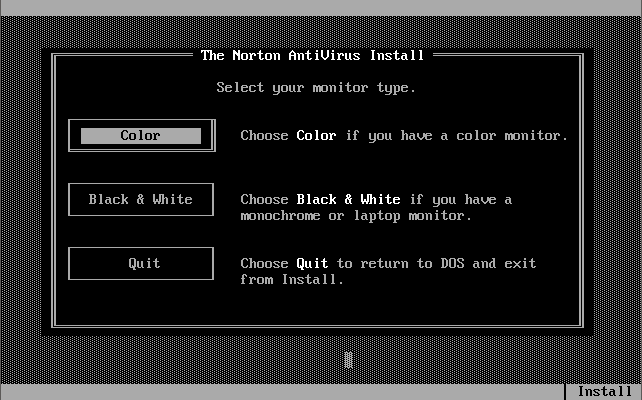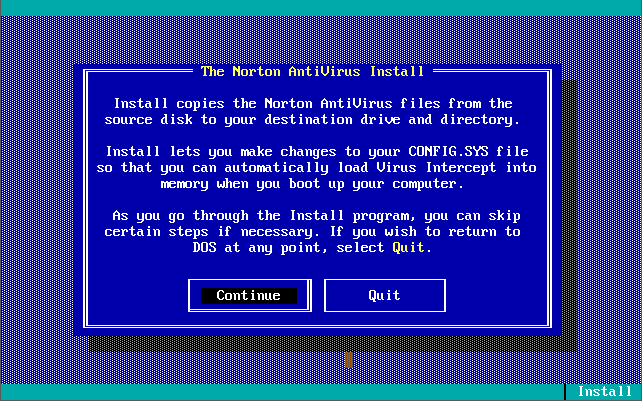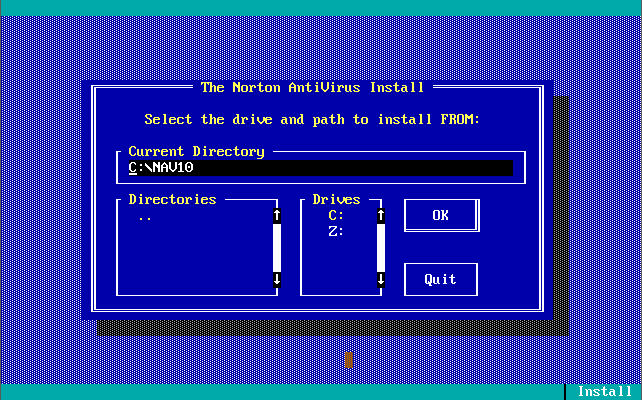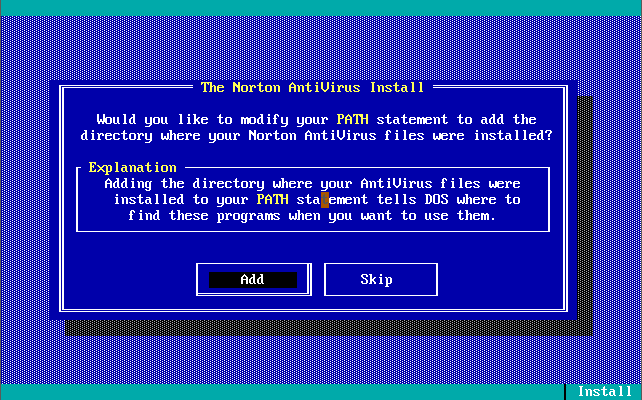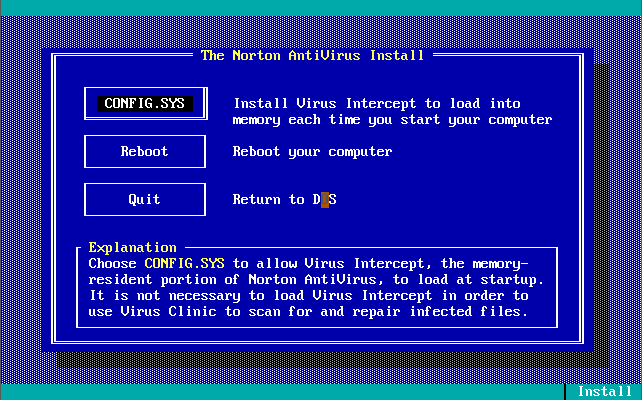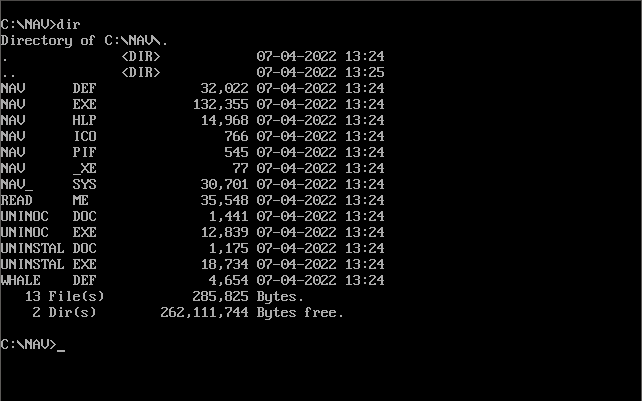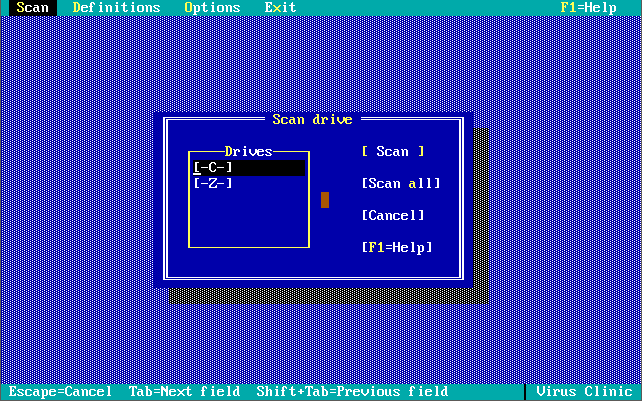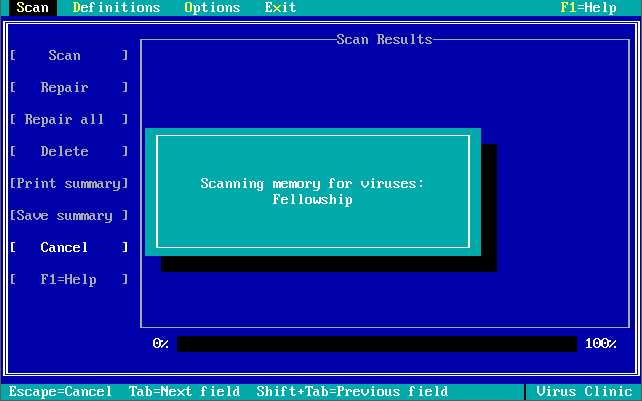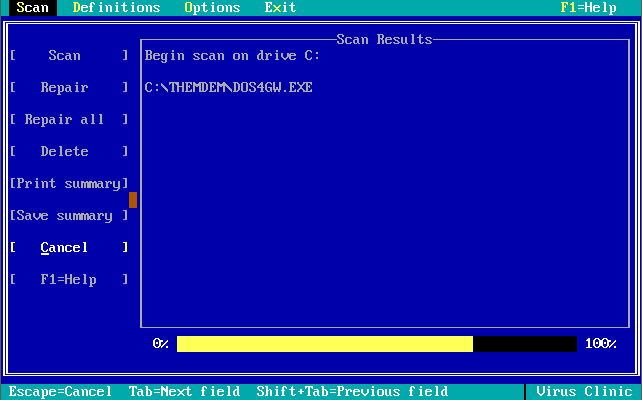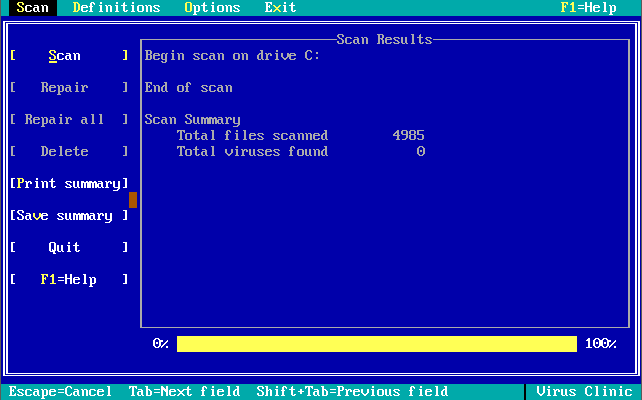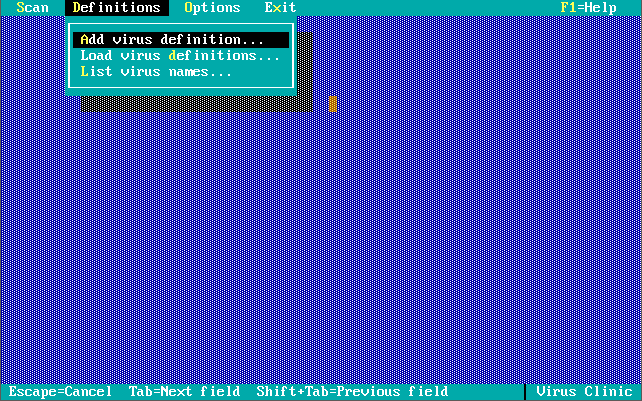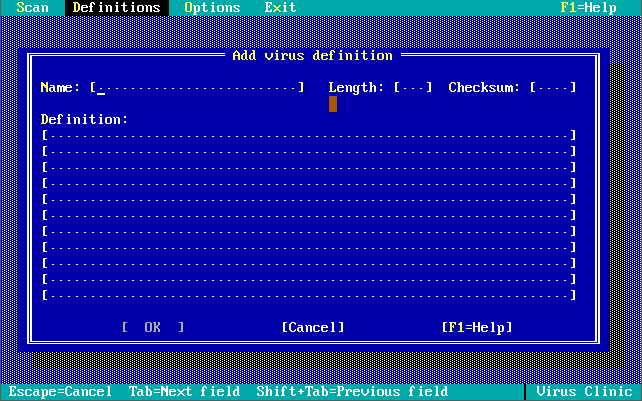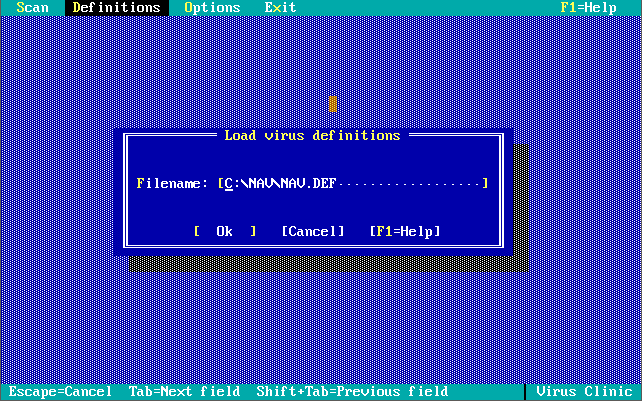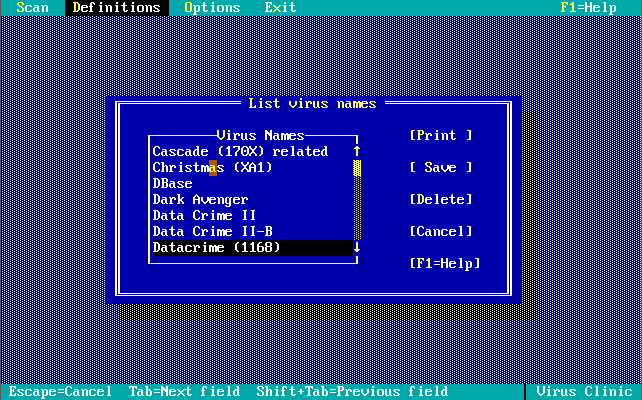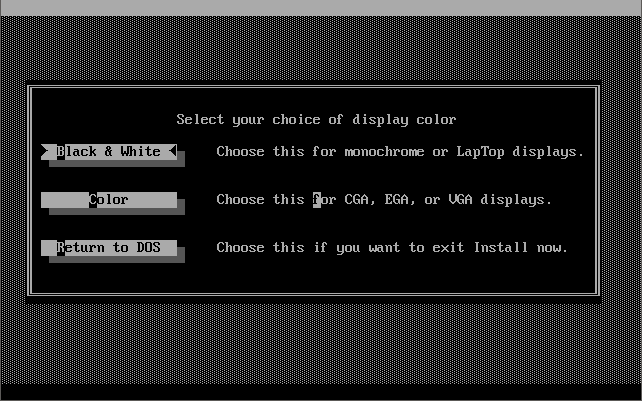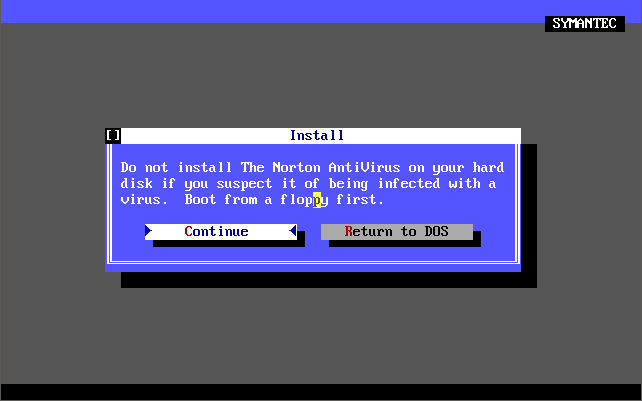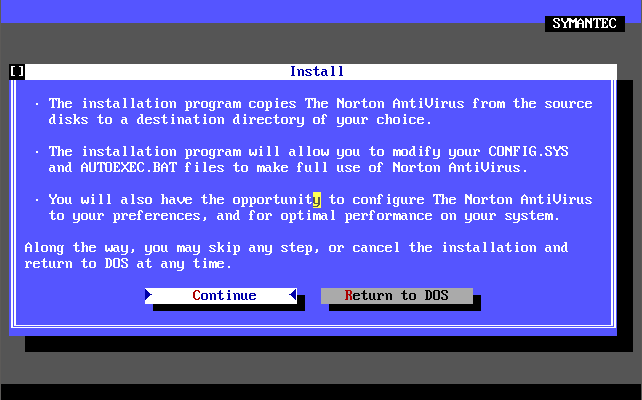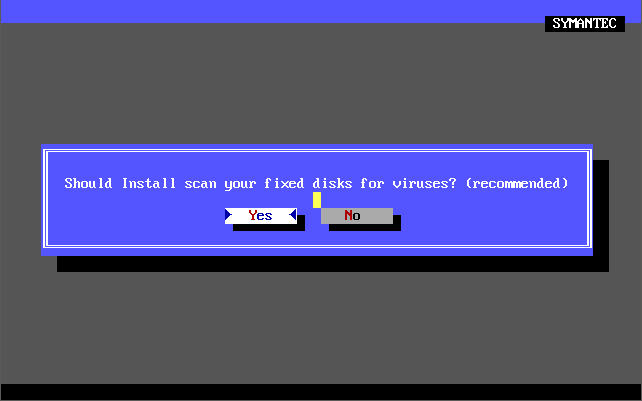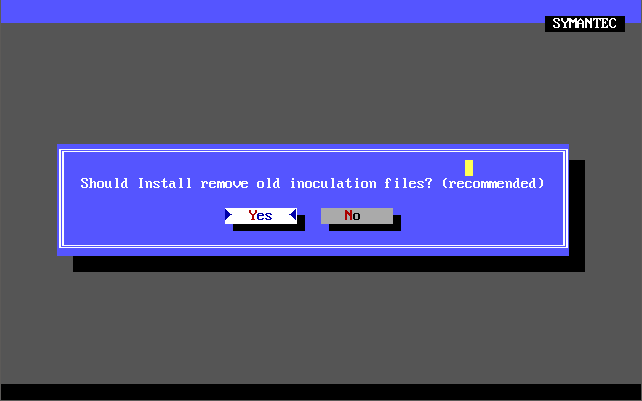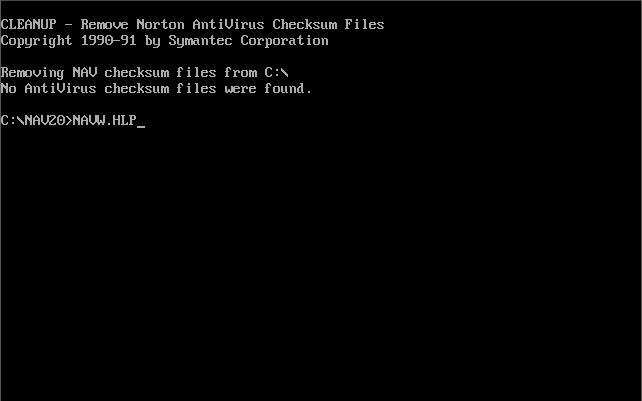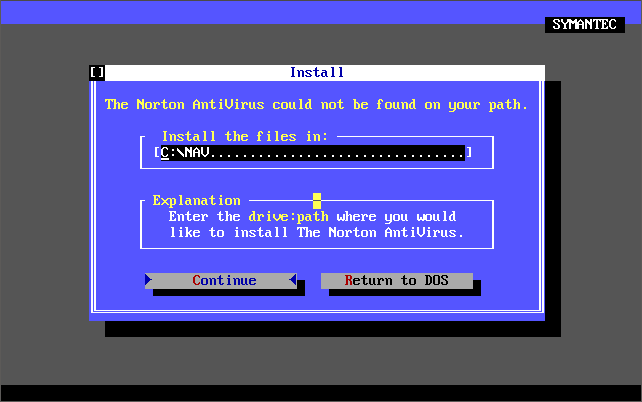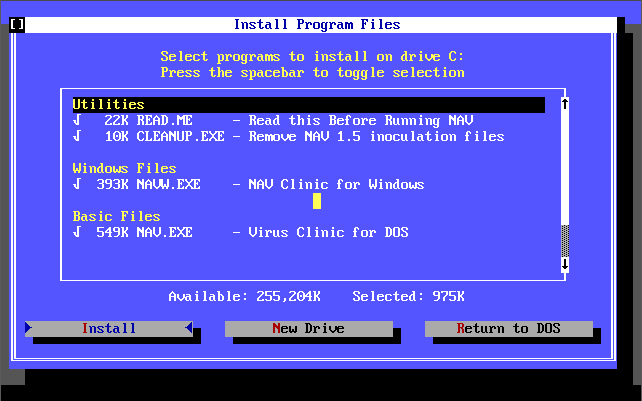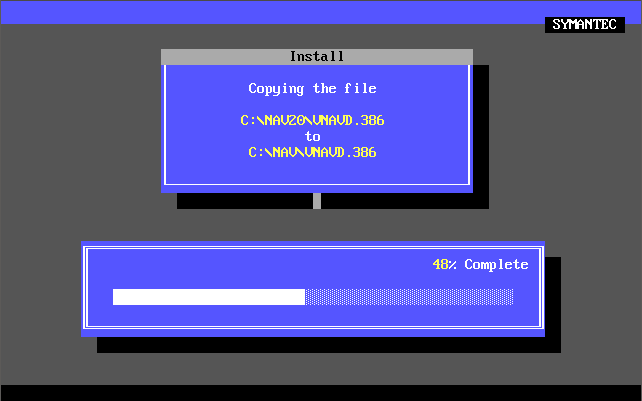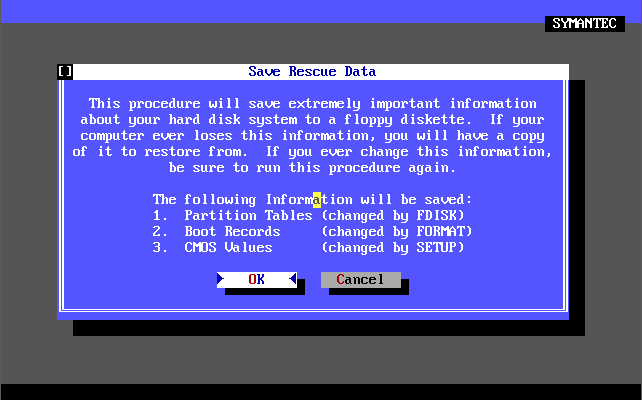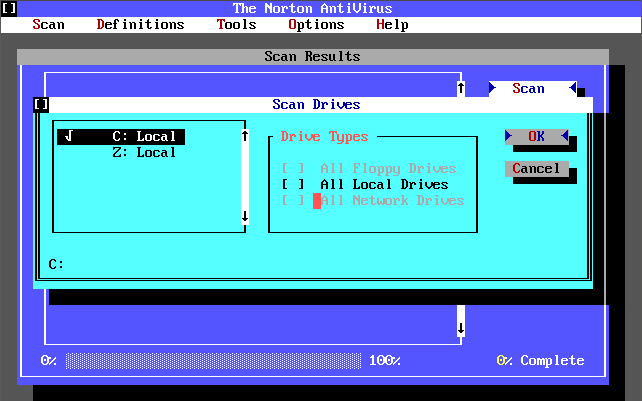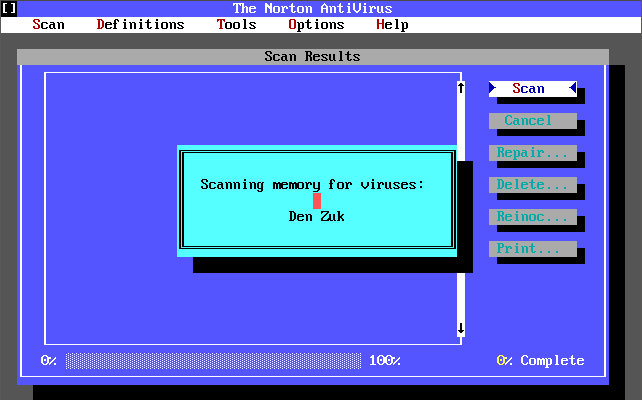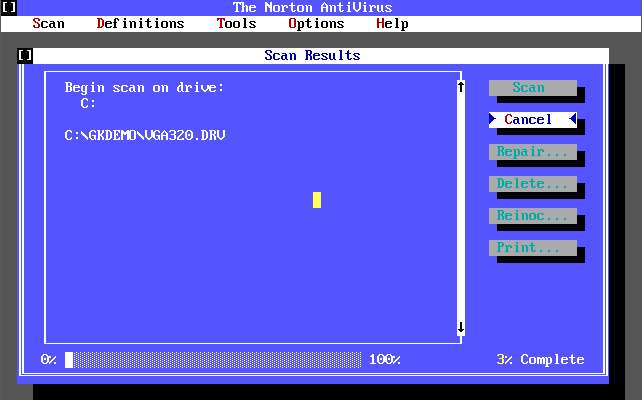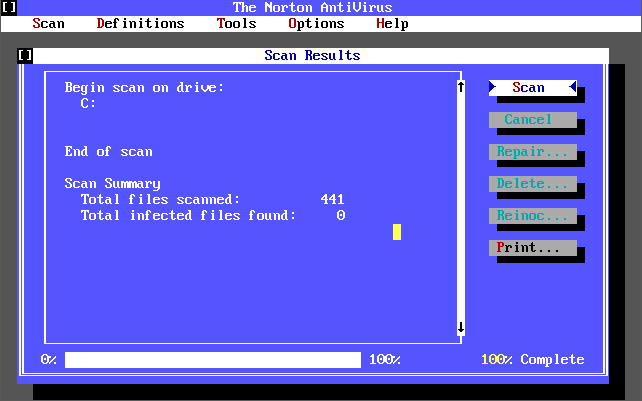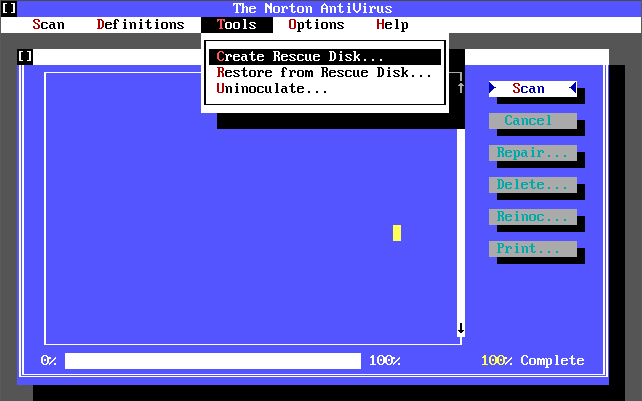Peter Norton Computing / Symantec
Peter Norton Computing was Peter Norton's own company that he started in 1985. His first product, The Norton Utilities, became ubiquitous during the DOS era. Offering power that simply didn't come with the standard DOS commands, these provided undelete, file find, wipedisk and wipefile commands to name but a few - they were considered essential both for security and convenience.

Symantec had started out even earlier, in 1982, in the field of artificial intelligence. Through a series of acqusitions and mergers, Symantec released their first product in 1985, a database management system called Q&A. It was unique in that it used a natural-language query based on a 600-word dictionary. This allowed users to request data by typing in English sentences, hence the product name, Q&A.
Despite its modest success at selling Q&A, Symantec had difficulty in gaining market share over other database companies such as Ashton Tate with their dBase product and even from Lotus, with 1-2-3. They made just $8m in their first two years of sales - far short of expectations (it would go on to be a big seller for them!), and the board soon realised they could not be a single-product company like WordPerfect or Ashton-Tate.
This led Symantec to enter into a period of acquiring other software companies in 1987 that had niche products outside of their database specialty. As part of these acquisitions, it was important they not only gained the products, but also the development staff.
In 1987, they released a word processor, Q&A Write. Similar to WordPerfect typical operations are accessed via the function keys in combination with Shift, Ctrl and Alt. It was designed to be fun and easy to use. There were numerous features not found in bigger word processing packages at the time, including the ability to perform mathematical functions directly in the document, extract data from a Lotus 1-2-3 .WK1 file and incorporate it into your document, built-in spell checker, and box drawing. It sold for $199.
Peter Norton Computing was bought by Symantec in August 1990, but they retained the "Norton" branding across numerous product lines well into the 2000s. At the time of the acquisition, the DOS "utilities" market was estimated to be worth $410m, of which Peter Norton Computing had about a 34% share! The acquired company became a division of Symantec and was renamed Peter Norton Computing Group. Most of Peter Norton Computing's 115 employees were retained. The merger also helped Norton Computing regain the market share it was losing to competitors, especially Central Point Software.
Norton AntiVirus / Symantec AntiVirus
Building on the success of The Norton Utilities, a number of other products including Norton Commander and Norton Backup followed. Jumping on the anti-virus bandwagon, Norton AntiVirus was first launched in 1990.
Just like other anti-virus tools that it competed against, it had several key utilities including:
- Virus Intercept - A memory resident program that protected against
infected files entering your system. Virus Intercept required as
little as 1K RAM, and could load in high memory. - Virus Clinic - A program that scanned your system for the presence
of known viruses and file irregularities, and repair infections
caused by most known viruses. It had flexible scanning features such as quickly checking your entire computer system for virus
infection, or check executable files only. Scanning could be set to occur every time you start your computer, or only on demand.
Version 1.0.0 was launched in December 1990. Out of the box, the virus definitions (the 32 KB-sized NAV.DEF file dated 6th December 1990) could detect and remove 142 viruses. The main program was called Virus Clinic. The installer provides you with the option to install Virus Intercept on startup, which is the memory-resident virus portion of Norton AntiVirus.
Note in these last 3 screenshots the somewhat unique ability to input your own virus definitions, or signatures directly!
Version 1.5 arrived on 5th August 1991, 8 months after the first release. It was much the same as v1.0.0 to install, except for the added option of the level of scanning on startup that Virus Intercept would perform. It could detect and remove 321 viruses. No other features differed from v1.0.0.
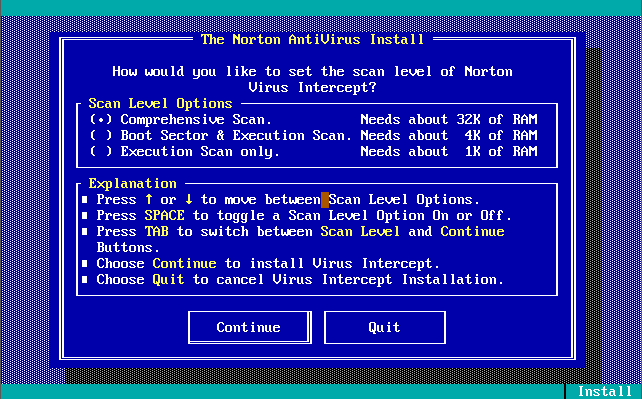
Virus Intercept v1.5's startup settings
Version 2.0 was released in 1992, supporting both DOS and Windows. It's virus definition file (dated 7th April 1992 and weighing in at 31 KB) detected 340 known viruses and 1,005 strains. This version added the concept of creating a 'Rescue Disk' that you could use to boot virus-free and run a scan. You could still add your own virus definition manually via the Definitions->Modify List menu option.
There was also a 'Michelangelo Edition' which was a free cut-down version of Norton AntiVirus 2.0 for DOS that came out on 15th February 1992 in time for when the Michelangelo virus was due to activate on 6th March 1992. Upon activation the virus would begin formatting the infected computer's hard disk. Symantec released this version which detects and removes the Michelangelo virus.
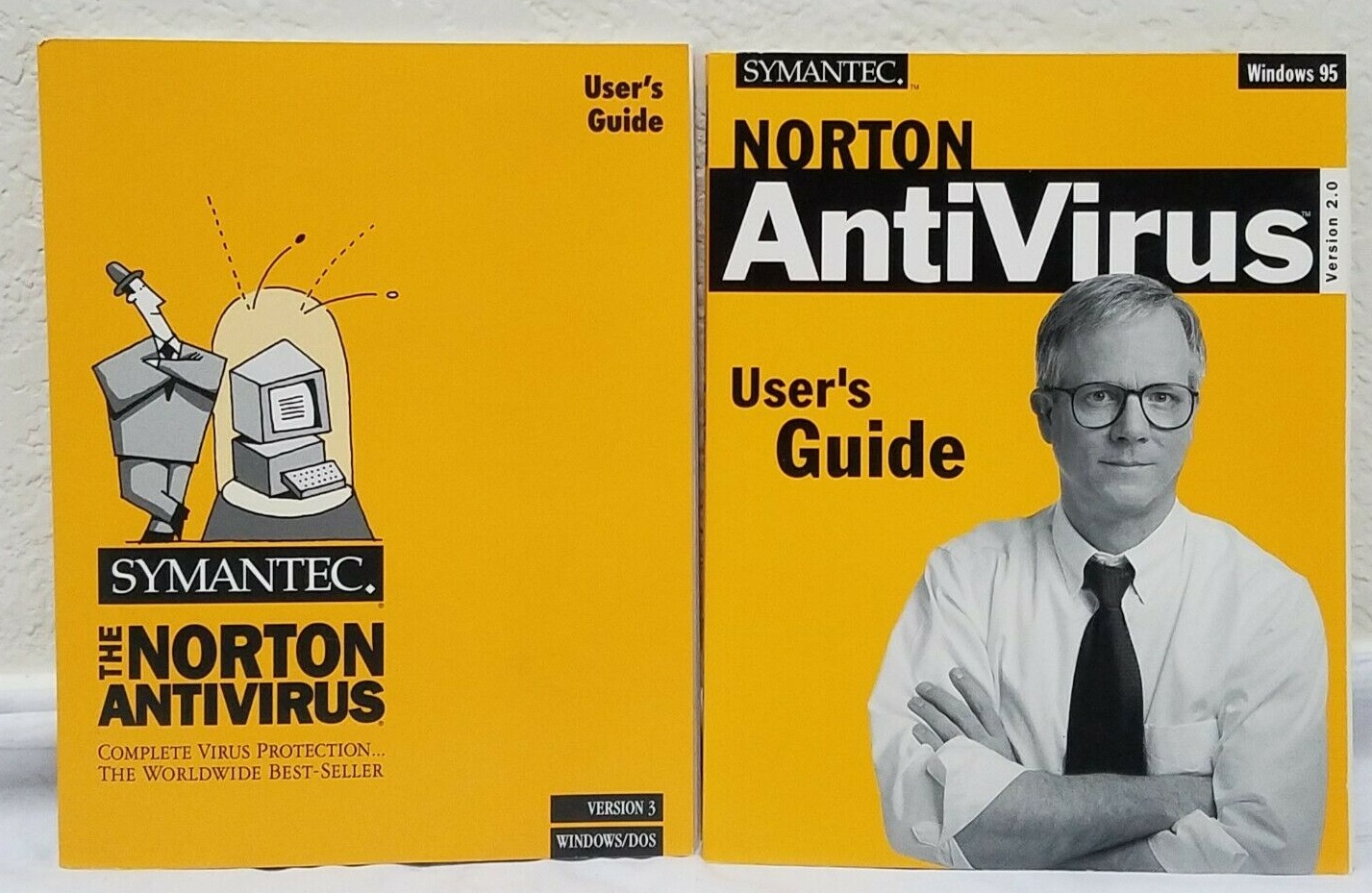
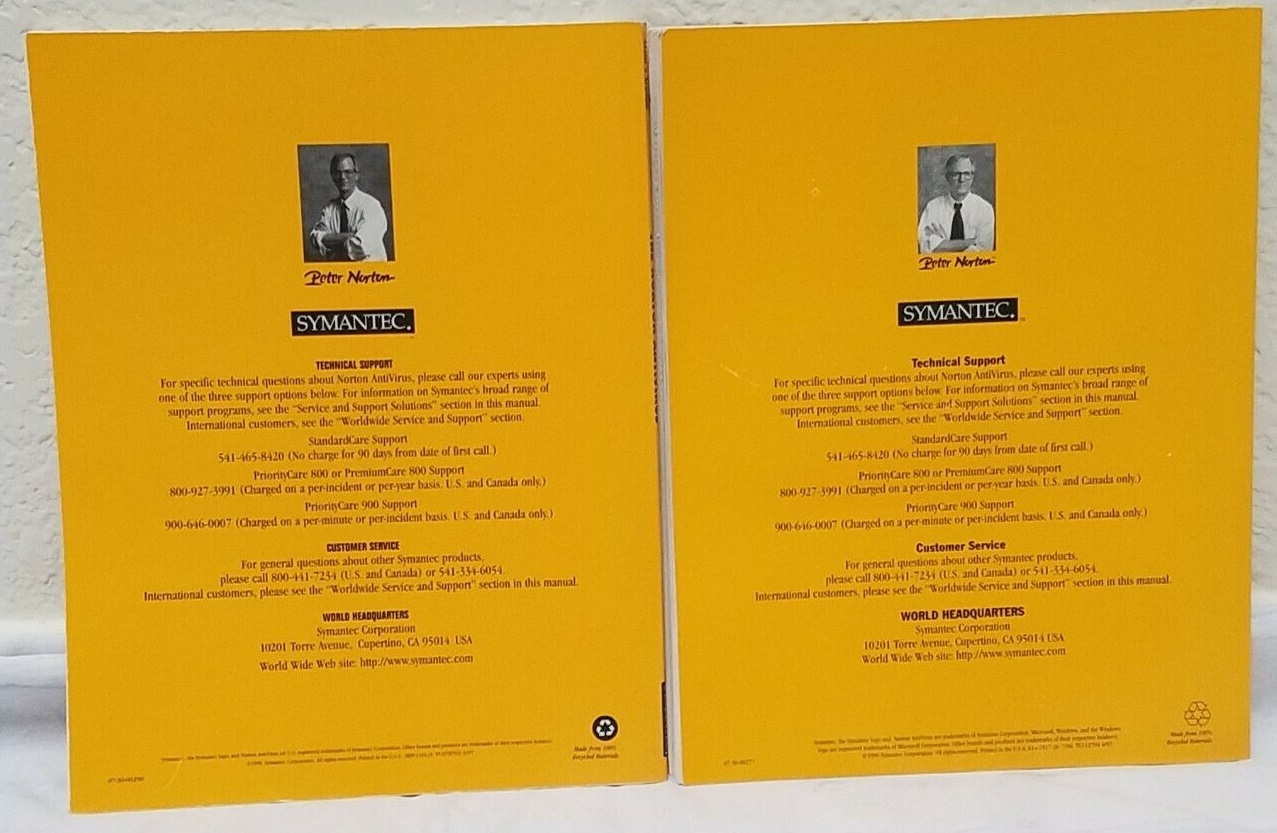
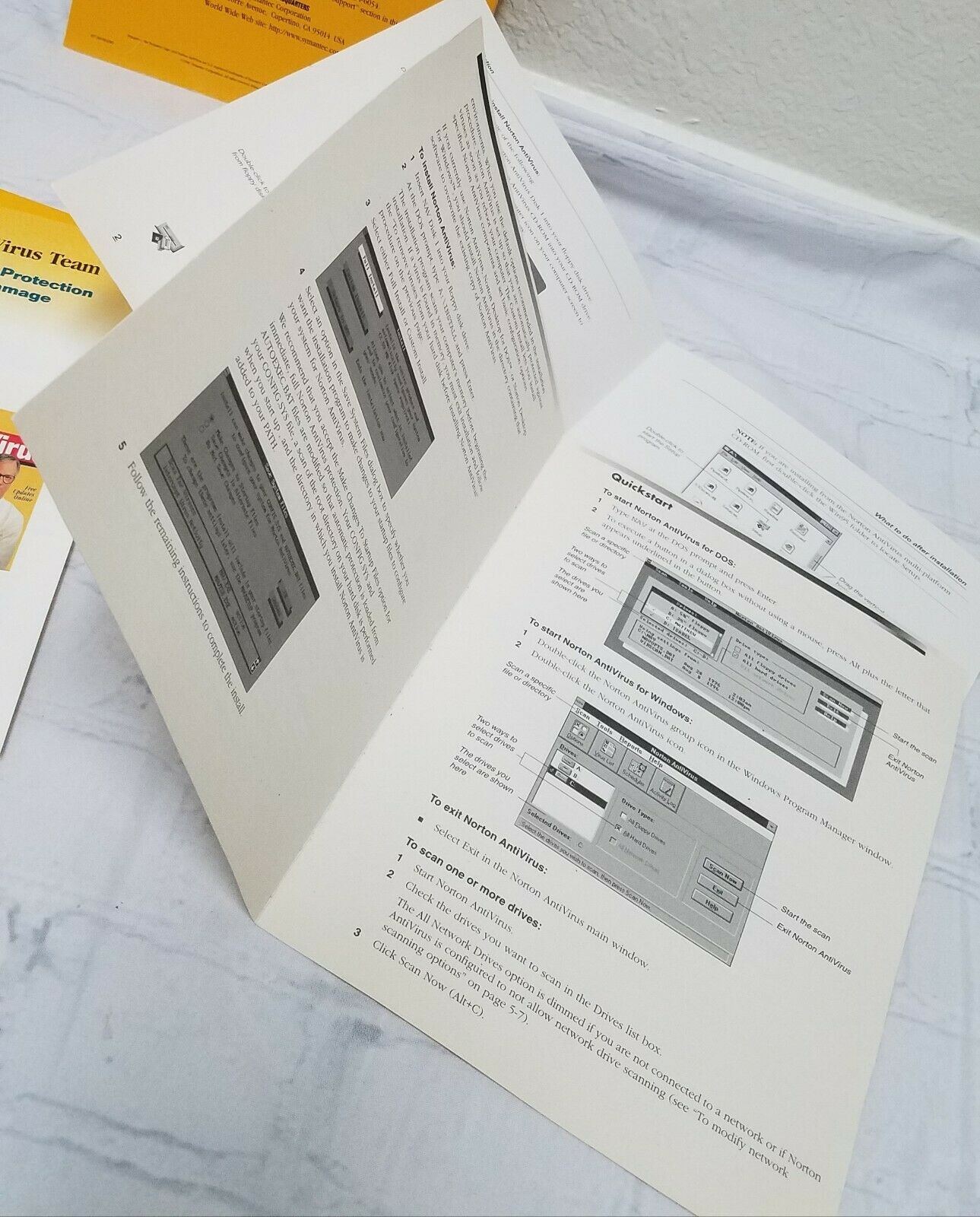
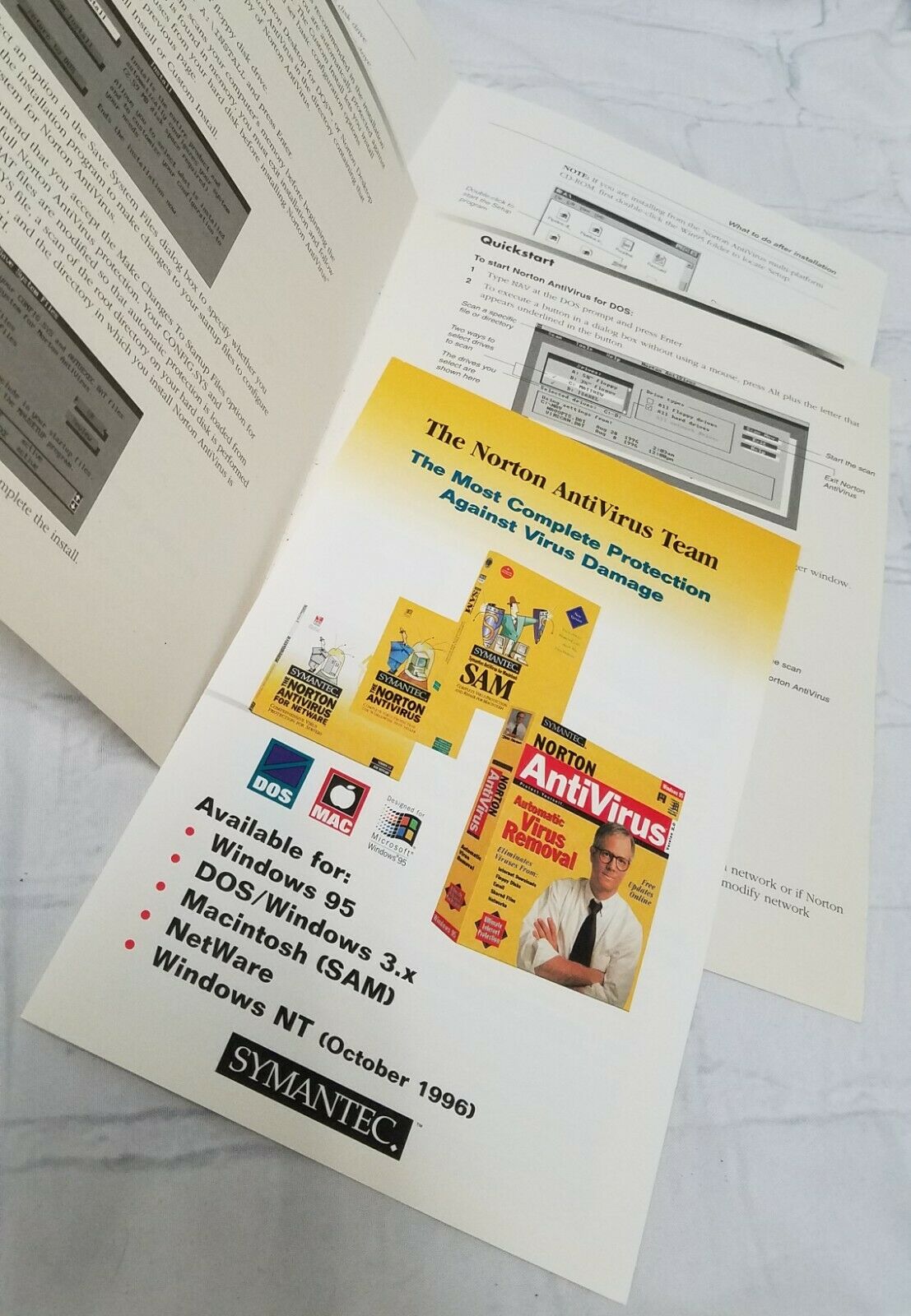
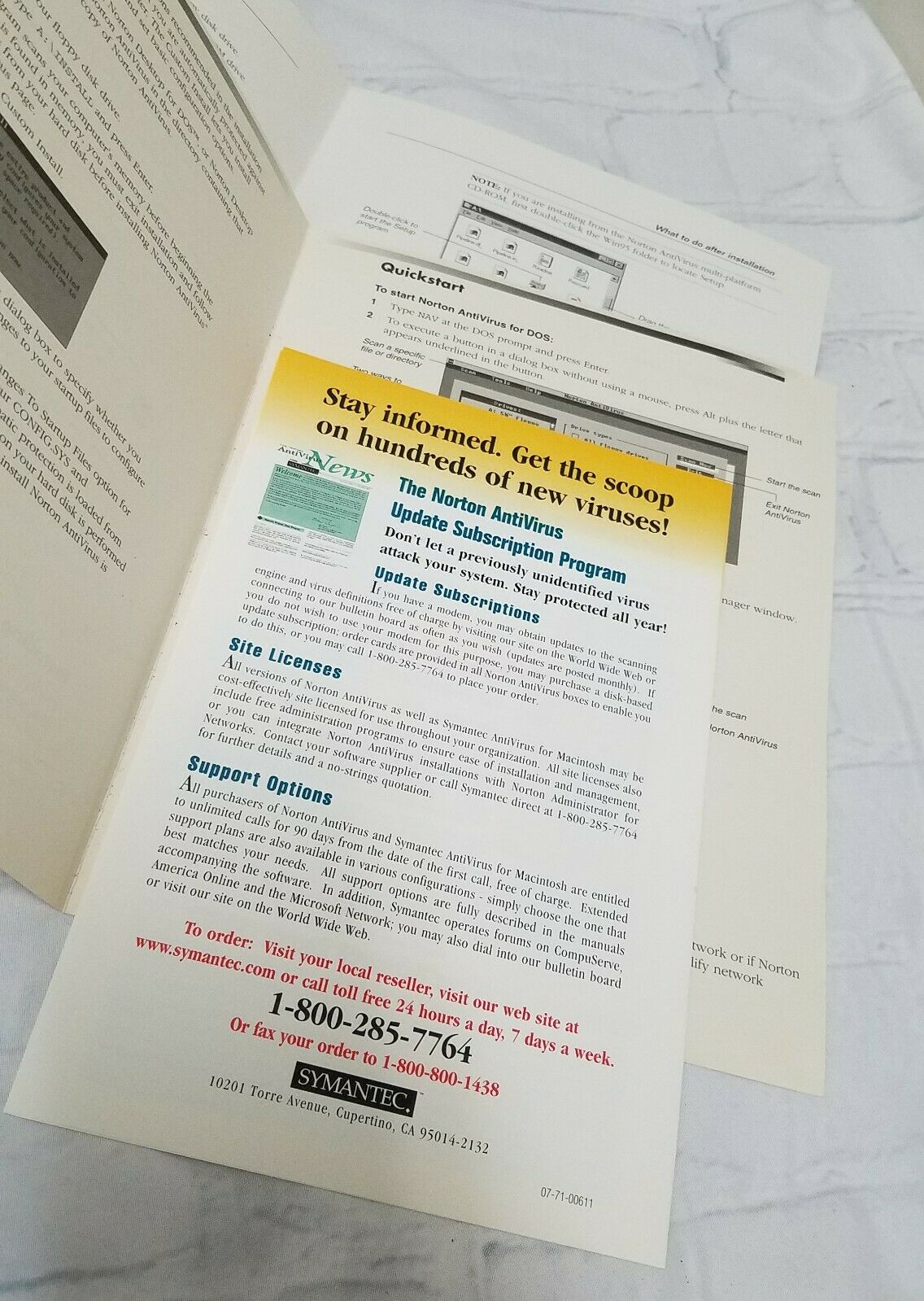
Version 2.1:
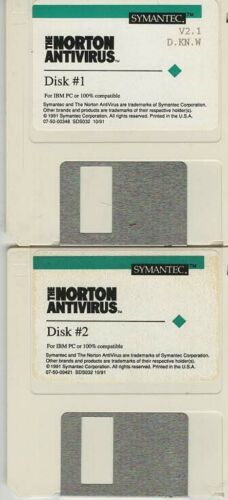
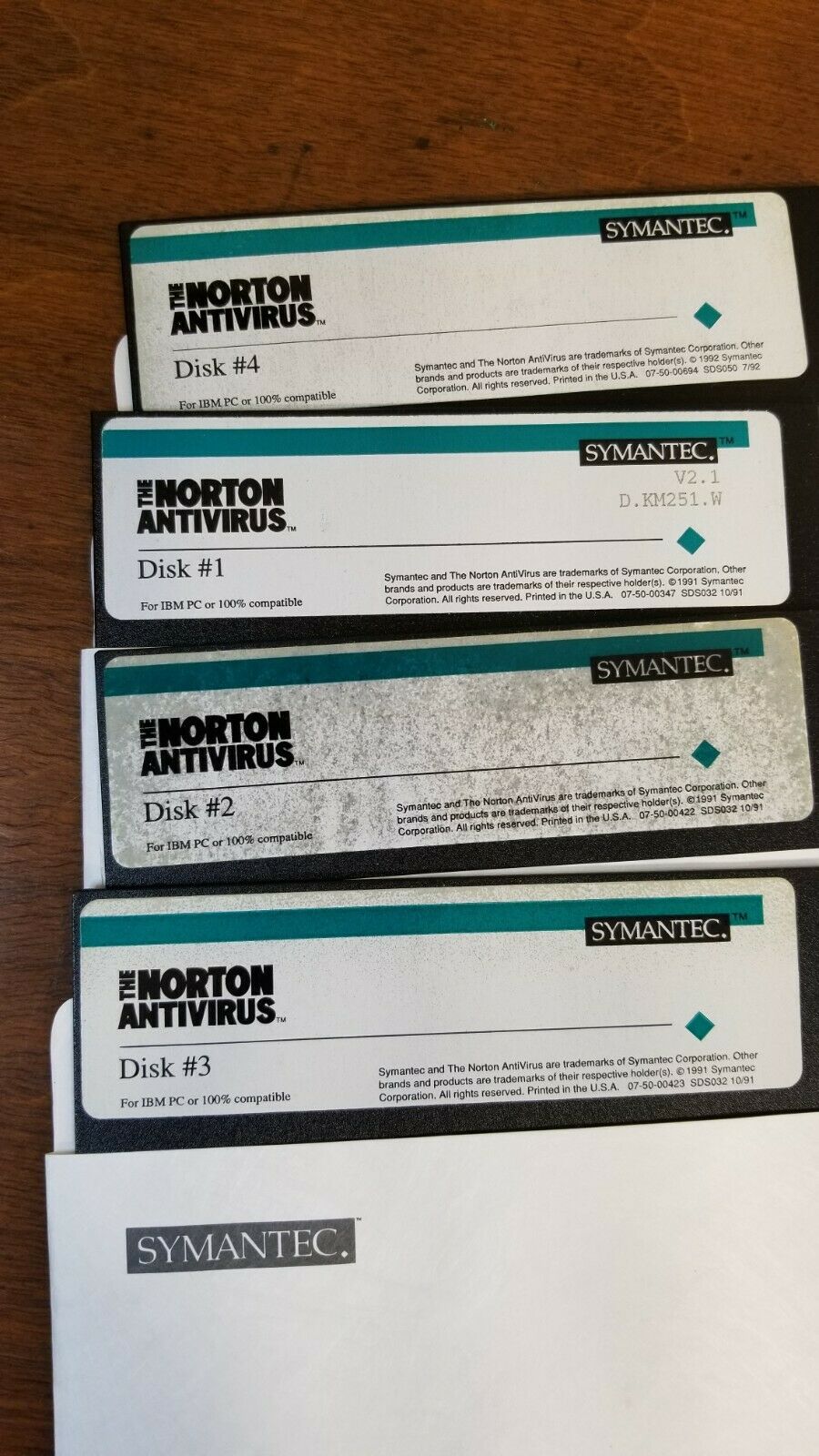
Version 3.0:
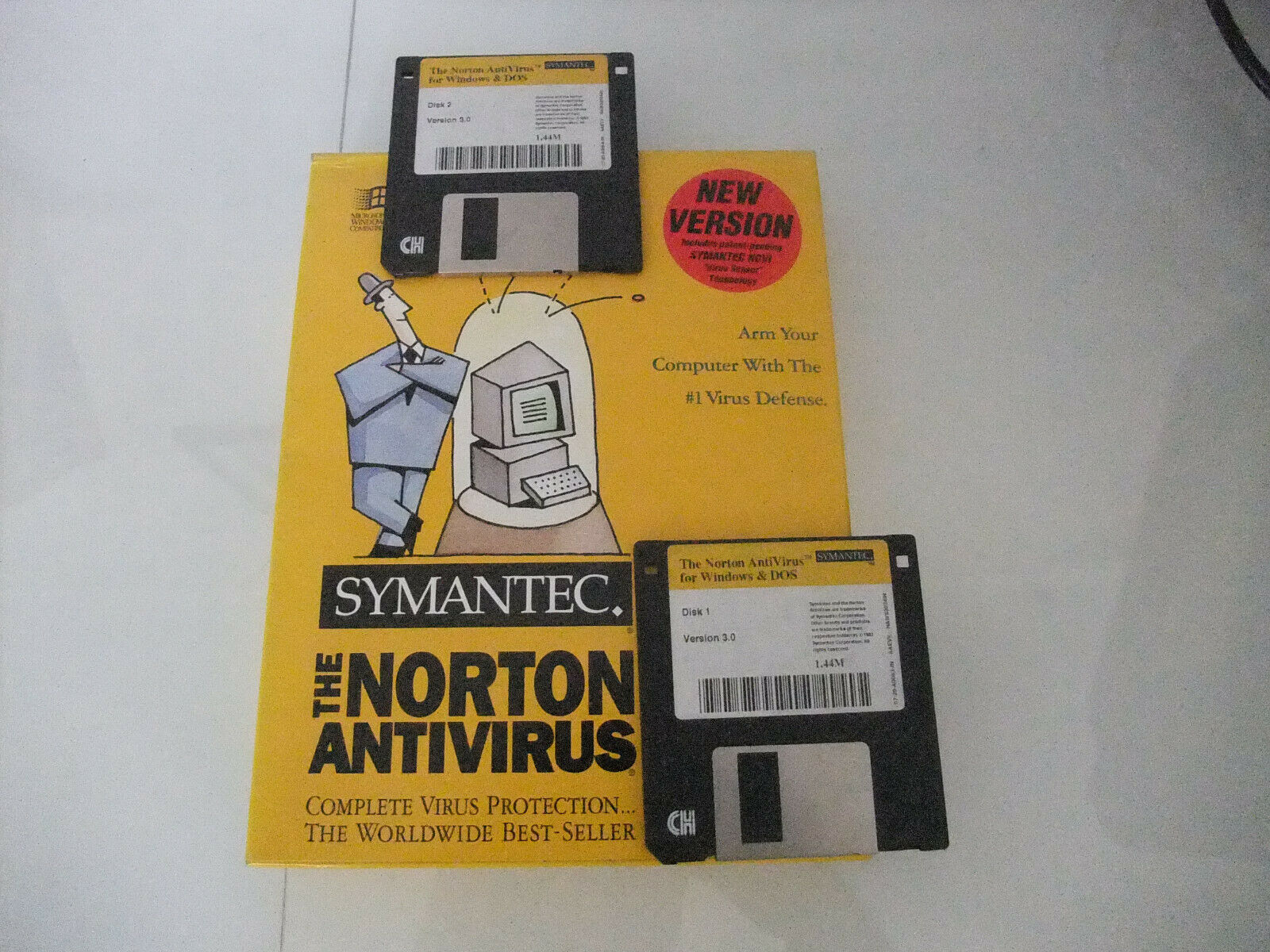
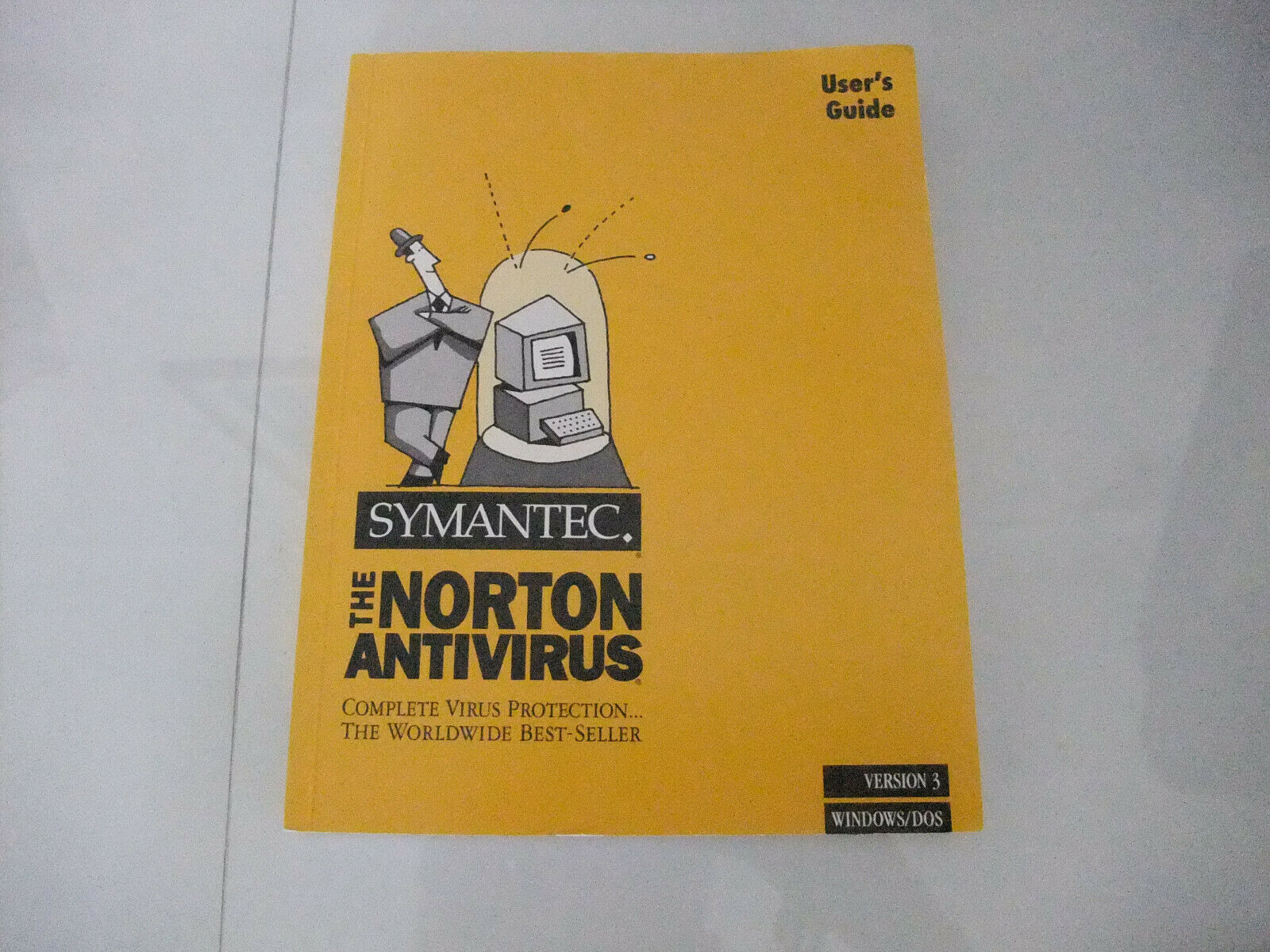
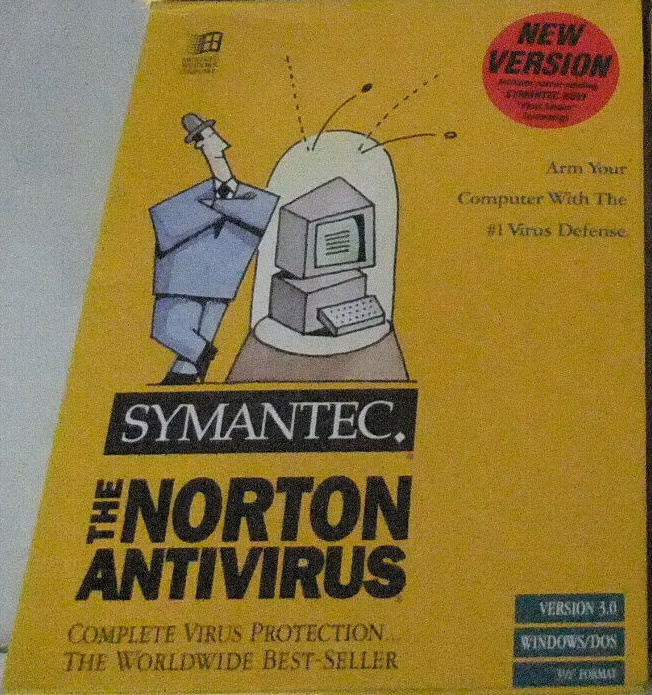
Version 5.0:
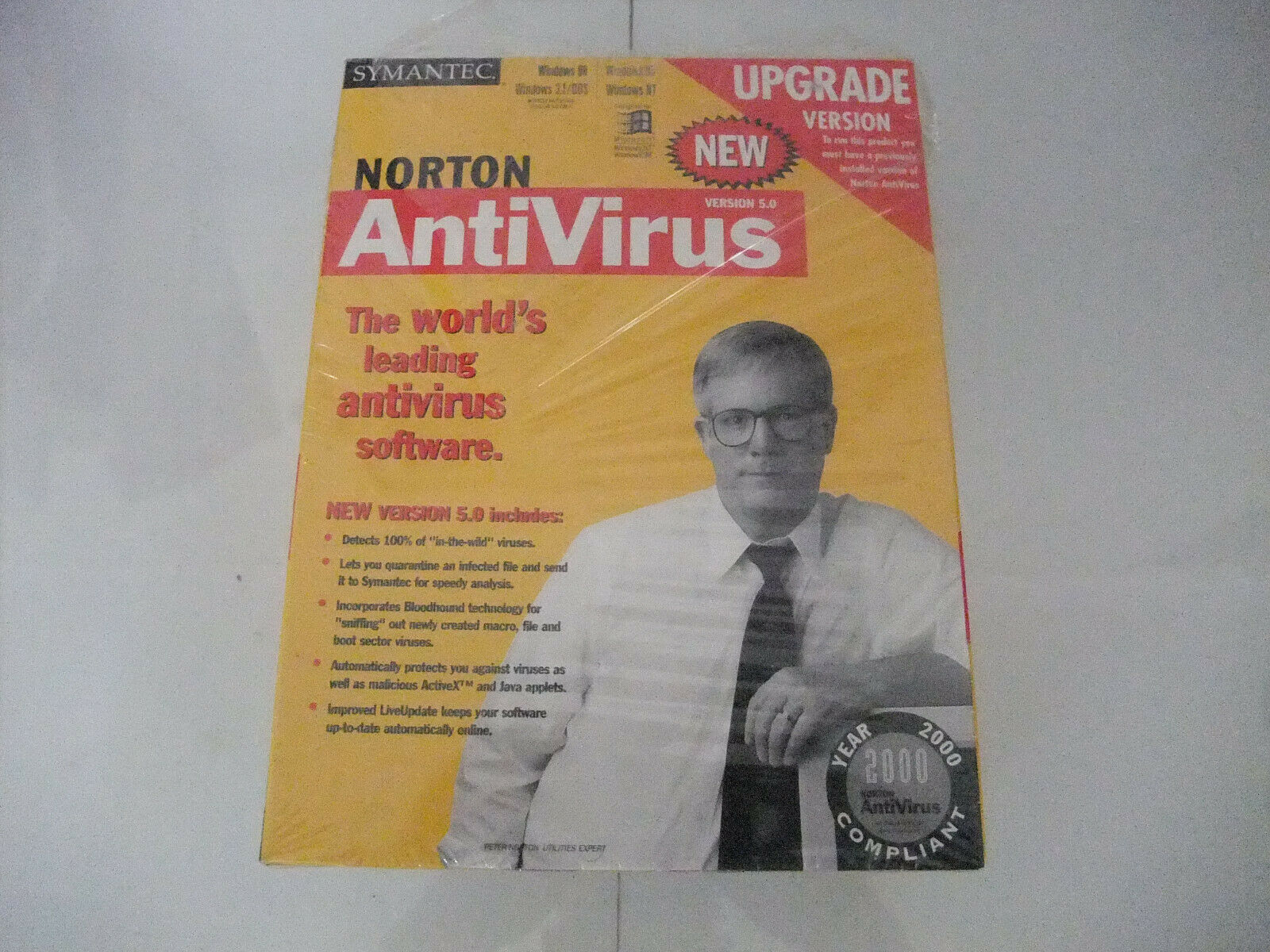
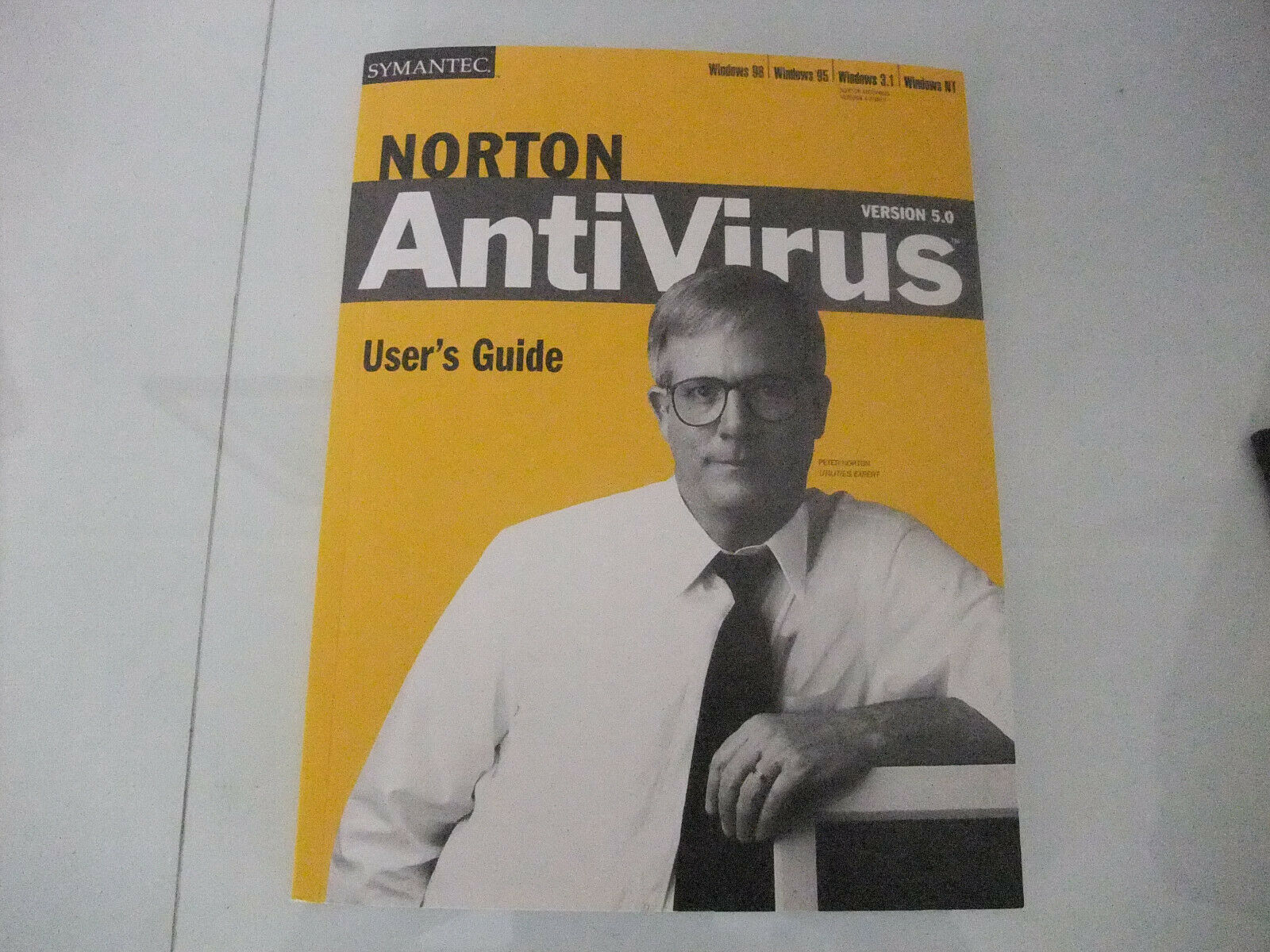
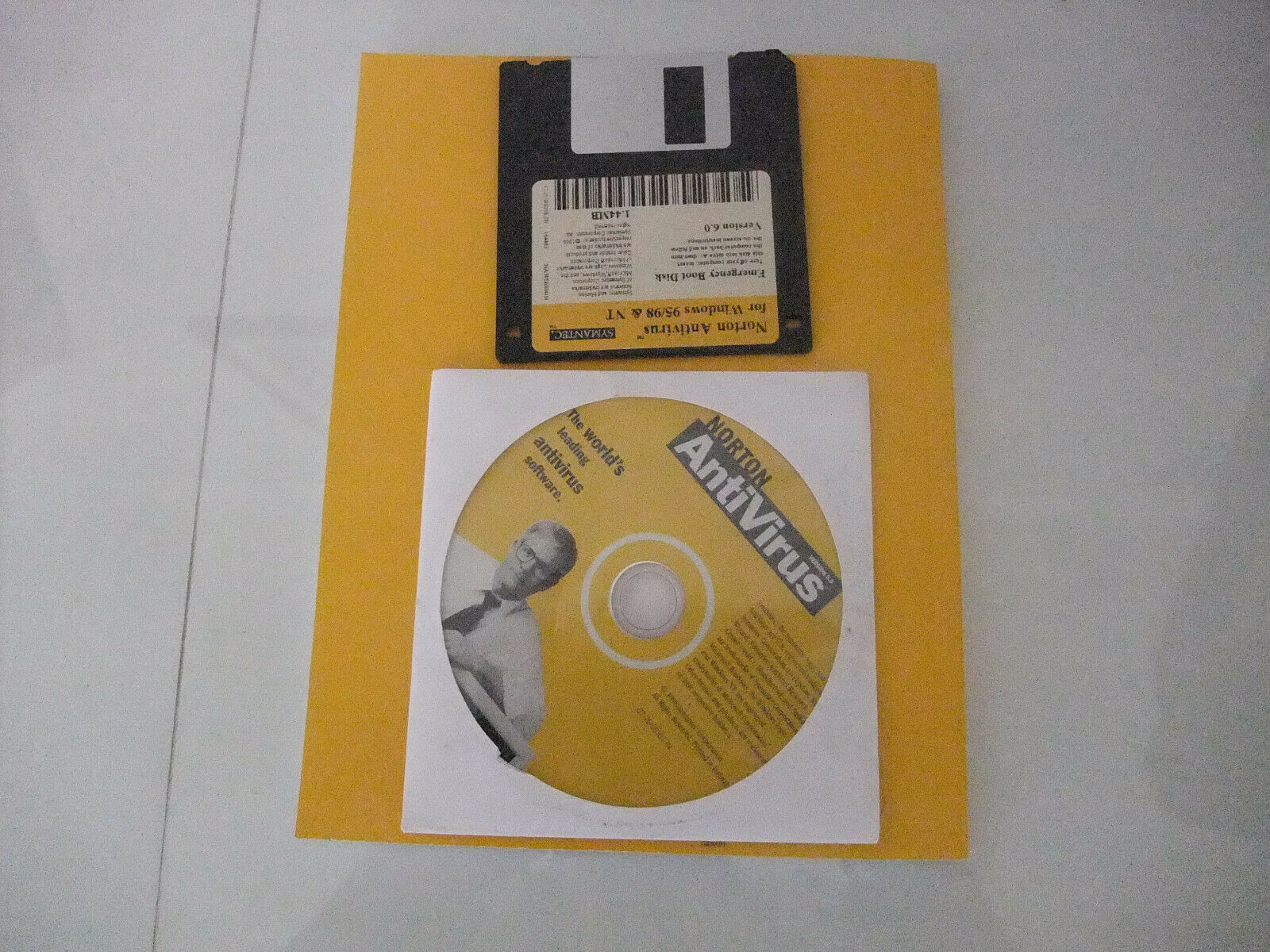
The last virus definition updates for DOS were around September 2001, which was 0907i16.exe.
Norton Commander
The Norton Commander was a file manager, editor, viewer and terminal emulator, first launched in 1986. It was designed to make more difficult or impossible tasks in the DOS command line possible and easy to do. With two 'panels' you could view two directories side-by-side and perform operations between them.
Version 4.0 arrived in July 1993, adding these new features:
- over 30 new file viewers including Lotus 1-2-3, RBase, dBase, Reflex, Paradox, Q&A, compressed files (.ZIP, .ZOO, .ARJ, .ARC, .LZH, .ARC and .PAK) and images (both bitmap and vector)
- compressed file handling
- new editor features
- a new cloning feature
- advanced features for Power Users
- new shortcut keys
- filter/attribute improvements
Version 5.0 was released in February 1995, and added the following new features:
- drag & drop capability to copy or move files between the left and right panels
- more advanced filters for selecting files based on date/time, size, and attributes
- a sync feature to keep directories the same between two or more computers or network volumes
- compressed file viewing
- more disk utilities including format disk, label disk and copy disk
- network utilities (for Novell Netware 3.x and 4.x) including attach/detach network, map drive, send message, and server info
- file split/merge
- disk cleanup
- file search - a completely rewritten File Finder with regular expression support, duplicate file search, multiple search locations and much more
- modified terminal emulation program
- 20 screen savers (both text and graphics)
Version 5.51 was the last release for DOS, arriving on 1st July 1998. It was almost the same as version 5.0 in terms of functionality, but added support for long filenames (LFNs), though in DOS real mode this did require a TSR to be loaded first, otherwise filenames would be truncated.
